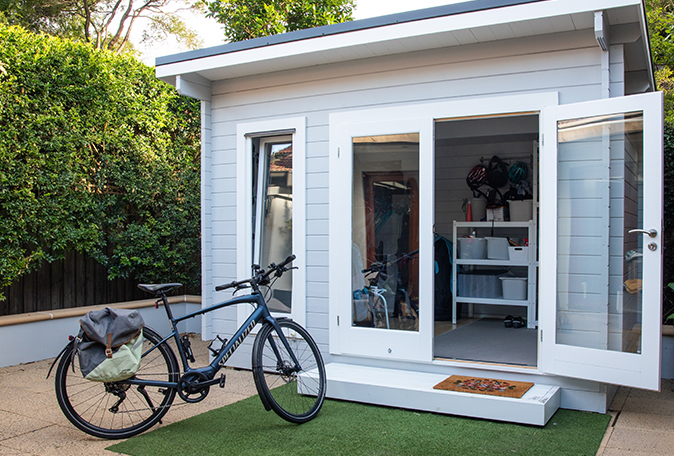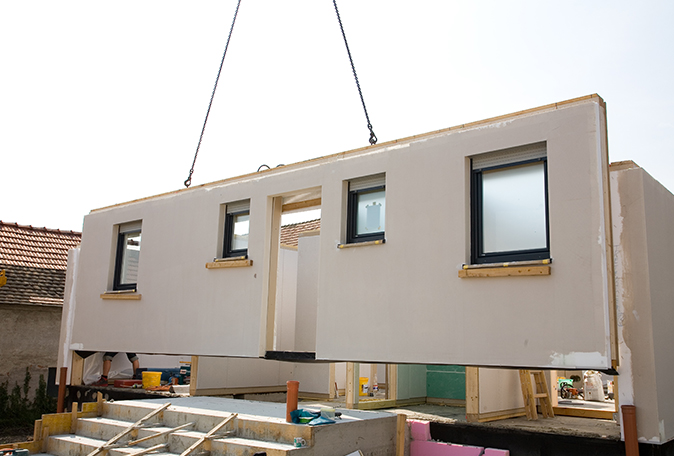Innovation often stems from adversity, sparking human ingenuity to create sustainable, cost-effective, and healthier living environments.
In a world facing the escalating challenges of climate change and inequality, embracing innovation is not just desirable—it’s imperative. Innovation transcends traditional boundaries, pushing the envelope of what’s possible and delivering solutions that can be game-changing. Whether it’s harnessing solar power in new ways, recycling water, or creating homes that generate more energy than they consume, innovation is at the heart of sustainability. These advances are not just good for the environment; they also deliver direct, tangible benefits to homeowners and renters. Lower utility bills, increased home values, enhanced comfort, and improved health are all within our grasp. Moreover, they pave the way towards a decarbonized, equitable society, where everyone has access to clean, safe, and affordable housing. We must all embrace innovation—not just for our benefit but for future generations. Because it’s in innovation where we’ll find the solutions to our most pressing issues.
Key Concepts:
1Net-Zero Energy Buildings (NZEBs)
These homes produce as much renewable energy as they consume over the course of a year, effectively reducing their carbon footprint to zero. Popularized in Europe and North America, NZEBs use solar panels, wind turbines, geothermal systems, and high-efficiency appliances. Plus, they have excellent insulation and passive design to reduce energy demand. NZEBs combine energy-efficient design with renewable energy production, often through solar panels or wind turbines. They are meticulously designed to minimize energy use through high-efficiency appliances and superior insulation.
Fact: NZEBs can save homeowners up to $60,000 over a 30-year mortgage period in reduced energy costs.
2Passive Houses
Originating from Germany, the Passive House concept emphasizes extreme energy efficiency. By utilizing high-performance windows, insulated facades, and heat recovery ventilation systems, these homes maintain comfortable temperatures year-round, reducing heating and cooling needs by up to 90%. Passive Houses are extremely energy efficient, employing airtight construction, super insulation, and advanced window technology to keep interior temperatures steady. They also utilize heat recovery ventilation systems for optimal indoor air quality.
Fact: Passive houses require up to 90% less heating and cooling energy than conventional homes.

3Green Roofs and Walls
This concept popular in densely populated urban areas like Singapore and Toronto, involves the integration of vegetation into the building’s design. These installations not only reduce heat absorption but also mitigate the urban heat island effect, improve air quality, and provide habitats for wildlife. Green roofs and walls bring nature into urban spaces, reducing heat absorption and providing habitats for wildlife. They mitigate the urban heat island effect and reduce building energy use by acting as natural insulators.
Fact: Green roofs can reduce air conditioning demand by up to 75%.
- Greenroofs.com
- “Essential Green Roof Construction: The Complete Step-by-Step Guide” by Leslie Doyle
4Tiny Homes
From the U.S. to New Zealand, tiny homes are gaining popularity due to their affordability and minimal environmental impact. Though compact, they can incorporate numerous sustainable features like solar panels, composting toilets, and rainwater harvesting systems. Tiny homes emphasize minimal living, often under 500 square feet. They can be equipped with sustainable technologies such as solar power, rainwater harvesting, and composting toilets.
Fact: The average tiny home emits 2,000 pounds less CO2 annually than a traditional house.

5Prefabricated and Modular Homes
These homes are built off-site and then assembled on location, minimizing construction waste and speeding up the building process. Popular in Scandinavia and the U.S., these homes often incorporate sustainable materials and energy-efficient designs. Prefab and modular homes are manufactured off-site and assembled on location, reducing construction waste and on-site pollution. They offer quality control and can integrate energy-efficient features.
Fact: Prefab construction can reduce waste by up to 90% compared to traditional building methods.
6Earth-Sheltered Homes
A concept that’s been used for thousands of years and gaining renewed interest in regions like Australia and the U.S., these homes are partially or completely buried underground, providing excellent insulation and reducing heating and cooling demands. Earth-sheltered homes are built into the ground, using the earth’s mass to maintain a steady indoor temperature. They require less exterior maintenance and are less susceptible to extreme weather events.
Fact: Earth-sheltered homes can reduce energy use for heating and cooling by up to 70%.

7Bio-Based Materials
Using bio-based materials such as hempcrete, straw bale, or mycelium insulation has grown popular in places like the Netherlands and France. These materials have a low carbon footprint, are renewable, and provide excellent thermal insulation. Bio-based materials such as hempcrete, straw bale, or mycelium provide renewable, low-impact alternatives to conventional building materials. They sequester carbon, contribute to healthier indoor air quality, and provide excellent insulation.
Fact: Hempcrete homes can sequester more carbon than is emitted during their construction.
- “The Art of Natural Building – Second Edition – Completely Revised, Expanded and Updated: Design, Construction, Resources” by Joseph F. Kennedy, Michael G. Smith, Catherine Wanek.
8Adaptive Reuse
Particularly common in urban areas with limited space like New York or London, adaptive reuse involves converting existing buildings into residential spaces, thus preserving architectural heritage and reducing construction waste. Adaptive reuse repurposes existing buildings into residential spaces, reducing construction waste and preserving architectural heritage. This concept is ideal for urban infill, revitalizing neighborhoods, and reducing land use.
Fact: Adaptive reuse can prevent the release of thousands of kilograms of CO2 that would have been produced in new construction.

9Rainwater Harvesting and Greywater Systems
In arid regions like California and Israel, water scarcity has led to innovative water-saving solutions. These homes capture and treat rainwater for irrigation or reuse greywater from showers and sinks for toilet flushing. These systems reuse rainwater or greywater from showers and sinks for non-potable uses like toilet flushing or irrigation, reducing freshwater demand and relieving strain on water treatment facilities.
Fact: A simple rainwater harvesting system can save up to 50% of domestic water use.
10Natural Ventilation Design
In tropical countries like Indonesia and Brazil, residential designs often incorporate natural ventilation to reduce dependence on air conditioning, using smart architectural design to allow air flow and improve indoor air quality. Natural ventilation design takes advantage of wind and thermal buoyancy to maintain comfortable indoor temperatures, reducing dependence on air conditioning systems and improving indoor air quality.
Fact: Natural ventilation can reduce energy consumption from air conditioning by up to 30%.

It’s clear that these innovative residential concepts are reshaping the way we live, offering an array of benefits from reduced energy costs to improved health and wellbeing. Moreover, they are essential tools in mitigating climate change and promoting social justice, ensuring that homes are affordable and accessible to all. By embracing these innovations, we can create homes that are not just places to live, but also assets that contribute to a sustainable and resilient future. For anyone interested in learning more about these concepts, resources like the International Living Future Institute (https://living-future.org/) and the Passive House Institute (https://www.passivehouse-international.org/) are excellent starting points.
Special Considerations for Affordable Housing Projects:
1Local Climate and Resources
The success of any residential innovation largely depends on the local climate and available resources. For example, Net-Zero Energy Buildings are ideal in sunny areas with ample solar potential, while earth-sheltered homes are better suited for climates with extreme temperatures.
2Regulatory Environment
Laws, regulations, and building codes can either promote or hinder the adoption of innovative residential concepts. Streamlining permitting processes and offering incentives can help encourage more sustainable homes.
3Financial Feasibility
Despite many innovations offering long-term savings, upfront costs can be a barrier. Access to financing and understanding the true life-cycle cost of a home—factoring in energy savings and health benefits—are crucial.
4Community Acceptance
Homeowners and communities must be willing to accept and adopt these innovative practices. Education and awareness campaigns can help overcome misconceptions and promote the benefits of these sustainable alternatives.
5Skill and Knowledge Availability
Implementing new concepts requires appropriate skills and knowledge in the local workforce. Training programs and partnerships with educational institutions can help develop the necessary expertise for successful implementation.





